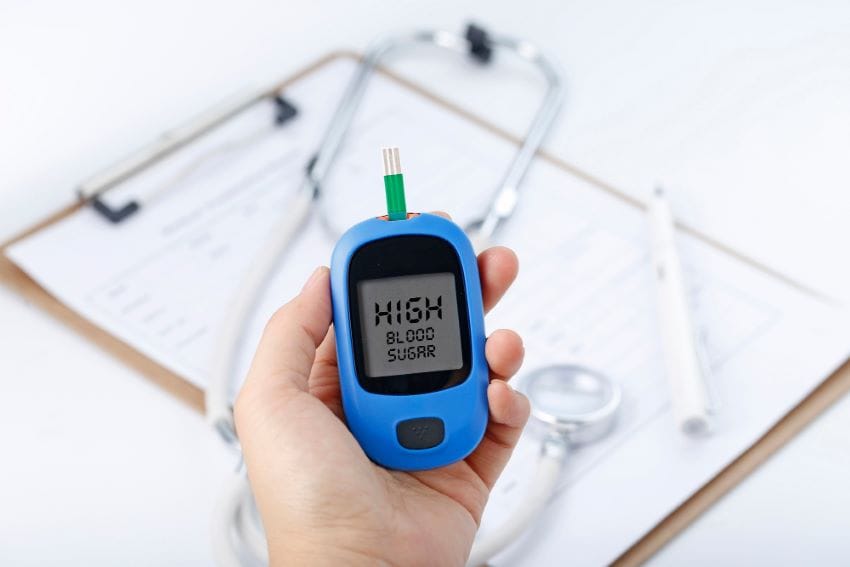Living with diabetes is a challenge, but there are strategies you can use to help you beat it. One of the biggest keys to success is including exercise in your routine. It not only helps with weight management, it also improves insulin sensitivity, heart health, and diabetes management.

Here are the top tips you need to work out as a diabetic.
Tip 1: Understand why it matters
Working out is hard, and one of the biggest hurdles is staying motivated. For diabetics, knowing how exercise helps your diabetes management can be a key motivator and help you stay focused.
- Increased insulin sensitivity: When you’re physically active, your body uses insulin more efficiently. This helps you keep your blood glucose level in check and reduces the risk of diabetes complications.
- Improved weight management: exercising can help support weight management. This is important for diabetics because maintaining a healthy weight leads to better insulin sensitivity.
- Reduced risk of heart complications: Diabetics are at increased risk of heart complications. However, regular exercise can help improve heart health, reducing this risk.
Tip 2: Consult your doctor
Before starting any new exercise routine, it’s important to consult with your doctor and healthcare team. Diabetes affects everyone differently, and personalising your approach is critical.
Your healthcare team can assess your overall health, consider any possible problems, and provide tailored advice on what type of exercise suits you best. This will help you exercise safely and effectively.
Tip 3: Choose the right type of exercise
Different types of physical activities have different benefits. Choose what works for you, and find the right balance.
- Low-impact aerobic exercises: low-impact aerobic exercises are good for heart health. A simple yet effective option is walking just 30 minutes a day. Alternatively, swimming is great for those with joint problems, and cycling is another good option.
- Strength training: Strength training can help promote strength and improve insulin sensitivity. Bodyweight exercises (like squats, lunges and push-ups) are an excellent way to start without having to invest in any equipment, and resistance bands are a cheap addition to expand your workout routine and target different muscle groups.
- Flexibility exercises: Flexibility exercises can enhance your overall well-being and help support diabetes management. Yoga is a good option, helping improve flexibility and reduce stress levels. Tai chi can be great too, improving balance and flexibility across all ages.
Remember, the key is balance. For a well-rounded fitness routine, you should include a mix of aerobic exercises, strength training and flexibility exercises.
Tip 4: Create a safe and effective workout plan
Once you’ve identified your workout activities, you need to build a safe and effective workout plan around them.

- Set realistic fitness goals. Start small with realistic and achievable goals. This will help you build confidence. You should also track your progress so you can see your improvements and increase your motivation.
- Gradually increase your workout, and avoid overexertion: Avoid the temptation to push yourself too hard or too fast. Start slow and steady, and gradually increase the duration and intensity of your workouts. This will allow your body to adapt and reduce your risk of overexertion. And if you experience pain or fatigue, scale your exercise back and reassess. Your workout should be challenging, not harmful.
- Keep it varied: Prevent boredom by switching between various activities. And include rest days to allow your body to recover and reduce the risk of injury. Aim for at least 1-2 rest days per week.
- Build a supported workout plan: Exercising with family or a friend not only makes your workout more enjoyable, it also provides support and encouragement. This will help you stay motivated and stay on track with your exercise goals.
Tip 5: Monitor blood glucose levels during exercise
Making sure your blood glucose level remains stable during exercise is important for a safe and effective workout. By keeping track of it, you can avoid hypoglycemia (low blood sugar) and hyperglycemia (high blood sugar).
- Understand that different exercises can affect blood sugar in different ways – Aerobic exercises (like walking, swimming and cycling) can lead to a gradual decrease in blood glucose levels. Strength training, on the otherhand,d can cause blood sugar levels to increase because of the release of stress hormones.
- Adjust insulin or medication as needed: If you’re taking insulin or other medications, talk to your healthcare team about adjusting your doses around your exercise routine. They can provide tailored advice to help ensure optimal blood glucose control.
- Consider the timing of your meals and medications – Plan your meals and medications with your workout routine in mind. This will help improve your chances of maintaining stable blood sugar levels, even as you exercise.
Tip 6: Plan pre- and post-workout nutrition
Your body needs fuel before and after exercise. This is particularly important for diabetics.
- Eat balanced meals for sustained energy: Pre-workout, focus on complex carbohydrates (like whole grains, fruits and vegetables). This will help provide a steady release of energy during your workout. You should also include a moderate amount of lean protein (like chicken, fish or tofu) to support muscle function. Healthy fats (like avocados or nuts) can also be a good option, helping balance your meal.
- Consider healthy snacks: A small snack 30–60 minutes before exercising can help stabilise your blood glucose level during a workout, especially if your last meal was several hours before. Choose snacks that combine carbohydrates and a small amount of protein, like a banana with peanut butter or yoghurt with berries.
- Don’t forget post-workout nutrition: Effective post-workout nutrition can help recovery and prevent blood glucose level changes. Start by rehydrating, as this will support overall recovery and help prevent possible blood sugar spikes. Then enjoy a balanced post-workout meal, focusing on complex carbohydrates, protein and healthy fats. This will help with muscle recovery and restore energy. Avoid rapidly digesting, high glycemic index foods, as these can lead to sudden spikes in blood sugar.
Tip 7: Listen to your body
One of the most important things to do when working out as a diabetic is to listen to your body. Recognising the signs of overexertion or low blood sugar, including rest days, and working out within your limits can help make sure your workout is effective and safe.
- Recognise the signs of overexertion or low blood sugar – Feeling tired during or after a workout is normal, but excessive fatigue may be a sign of overexertion. If you feel dizzy or lightheaded, your blood sugar may be low, so pause your workout and check your level.
- Include rest days – Rest days aren’t a sign of weakness. They’re an important part of any workout routine, helping your muscles recover and reducing the risk of injury. They also help prevent burnout.
Final thoughts
Exercise is a great tool in your fight against diabetes. But it takes time, discipline, and self-care.
By learning to listen to your body, recognising when to push and when to step back, seeking advice and support, and complementing your workout with an effective nutrition plan, you can give yourself the best chance of success.
And this will help you improve your diabetes management, increase your long-term health, and improve your quality of life.
Author:
Kritika Singh is the Founder & Editor-in-Chief of InDiabetes, a website that makes diabetes easy to understand, manage, and treat. Kritika is a type 1 diabetic, and has been managing her diabetes for over 15 years. She has a background in education, and is passionate about helping diabetics and diabetic primary caregivers increase their knowledge and improve their daily lives.











